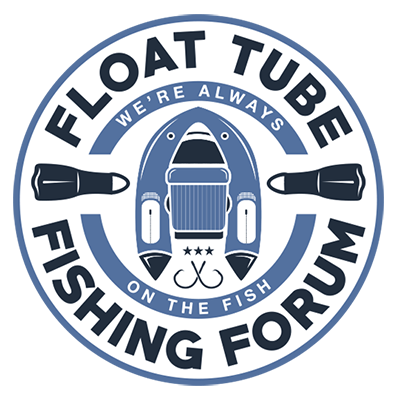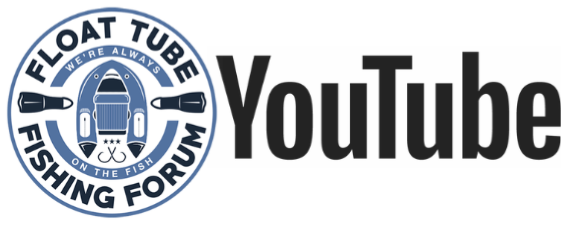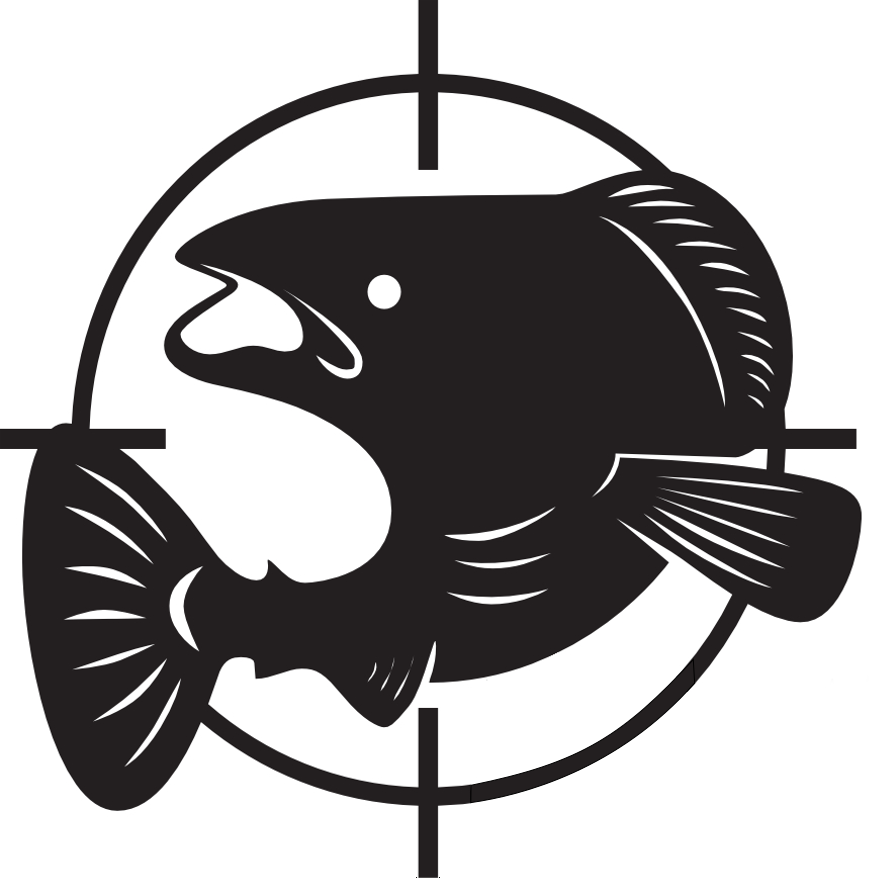1) any tube works, it's a question of how comfortable you'd like to be and how serious you are going to be. Basic donut/innertube style floattubes are still around and are VERY affordable aka "O" shaped. However, fishermen are approaching a new era of tubing because there are a lot of varieties out there now than before. You have your pontoon style tubes (two chambers forming a "H") as well as your "V" shape and "U" shape tubes. Most of the tubes we see on the water will be V or U shaped tubes.
O shaped tubes require you to sit in the water, sometimes up to your chest. They are, of course the cheapest. Full waders are ideal since so much of your body will be in water, last thing you want is to deal with cold from soaking in water all day. They move the slowest but you are very maneuverable due to the shape of the tube. They are also the hardest to get in and out of since you are sitting inside them. Storage is minimal with some pockets and custom rod racks is a must if you decide on bringing more than one rod. These tubes are single chambered, they pack up small.
U/V shaped tubes are faster. Some will offer you better a better seat so that you are more comfortable. Most of these tubes will keep your knees out of the water, keeping you more dry and comfortable. There are more storage options as well, from the zippered storage areas on each chamber to the extra pocket behind the back rest. They track much better but are a little harder to turn/maneuver due to the larger size. There are cheap sub 100 dollar ones, but the most popular ones are between the 150-300 dollar range with the high end stuff being offered for more. A majority of these tubes will have two chambers, one on each side with the higher end ones being a combination of surfboard and tube. Due to the popularity of this style of tube, there is a lot of information on how to customize it to your liking with mounts and even trolling motors. The higher seating will make casting a little easier and the additional tray/net in front of the setting area assists with managing tackle or as a stripping apron (original intent). These tubes are not as compact as the O shaped ones and take up more space while deflated. One can easily fit a deflated U/V style tube in the trunk of a compact car. It's usually the foam seat/back rest that cause it to have a larger footprint.
H style tubes are a bit more diverse, there are float tubes shaped like this but mostly pontoons. They tout themselves as best for covering water since ideally, only the two chambers on either side of you will be in the water, causing a lot less resistance when moving. They are two chambered like the U/V styles as well. But they are not as popular. Unless you are going the route of a pontoon, expect to sit no higher than a U/V shaped tube and you will not have that extra storage space behind you where the tube chambers converge. They are a little lighter than U/V shaped tubes though. Cost wise, they are a little cheaper than the U/V shaped so many people pay a little extra for the storage. Pontoons however, are a different beast. They are the largest of the tube family, with a metal frame allowing you to sit higher and out of the water if you chose to. They come with oars and some even attachments for anchors, swiveling seats, trolling motors etc. The storage capabilities can rival boats if you choose to customize one to that point. Given that they are predominately oar driven, they move a lot faster than U/V/H/O style floattubes. But keep in mind, they will take up more room and are harder to move from the vehicle to launch spot. Cost wise, cheapest ones I've seen start around 300 and go up from there. You also have to take into consideration that since you are sitting so much higher, you act as a sail when the winds pick up so it is more difficult to hold positions during gusty days.
2) Waders: They are not necessarily needed to float tube, it's a question of comfort. If you are in warmer climates, you can sit in shorts all day. But in cooler climates and winter time, waders are ideal in order to keep your warm and comfortable. No body enjoys sitting in frigid waters in shorts for long periods of time. Then again, there are special folks out there that can tolerate such punishment, I am not one of them. It is suggested to get breathable waders since they offer a bit more leeway for fishing conditions. You can always layer up if it gets cold, or wear just shorts/tshirt underneath if it's warm. Neoprene is good for cooler climates, but when the sun comes out it gets hot and sticky. Pant waders are a good option too if you know how you sit in the tube already, but be warned that you may still get wet when you are kicking around.
3) Fins are one of the most important pieces of equipment you will have. They can make or break you while on the water. Its a good idea to be able to test out fins prior to committing to a pair. I would say avoid the hard, flat ones at all costs. They don't give you a good amount of thrust and can wear your down fast if you are new to the sport. I suggest getting a decent pair of dive fins, either step in or full foot. They can be had from 30 bucks on up. A basic fin you get from a sporting goods shop is a good starting point (think snorkling pack). You want a fin that gives you the right amount of thrust to move you but not too long where it becomes difficult to turn.
Full foot is as described, it will fit like a shoe over your feet/stocking foot waders. Make sure they fit correctly too, they need to be snug but not overly tight. If you are going the route of stocking foot waders, add another size to your feet when you are deciding on fin size (if you wear a 9 shoe, you'll be looking for a fin that fits size 10...neoprene adds a size to your existing shoe size). Full foots are good since they are standard no frill fins. The huge draw back is you need to have a pair of footwear to wear between your vehicle and launch spot...last thing you want is to step on a pointy rock barefoot or wear a hole on the bottom of your stocking foot waders.
Step ins are very common as well. The ease of slipping them on like a slipper then securing them onto your foot by strap make it ideal since you don't need to worry about getting in/out of footwear. Draw back is you need to make sure you strap them in tight or else you risk them coming off while kicking.
I do admit, fins is where you will notice the most differences between styles and brands. Do try to check out user reviews if you cannot try them in person.
4) PFDs are a touchy subject. Although some of us don't decide to not use one or take one while we are out there, it is up there for MUST haves. Better to have one and not need it, than need it and not have it. Keep in mind that we are sitting in the water and boats may not be able to see us. Any PFD is better than no PFD. A PFD being towed/stored on your tube is pretty much not having a PFD. Remeber, we are already partially in the water, won't take long for us to be fully submerged in the water. Due to the limited amount of space we already have, many of us are using auto inflate vests. They are very comfortable and fit just like a vest allowing us full range of motion for casts and other tasks. When needed, they either auto inflate from water contact or are activated by cord. A co2 cartridge will inflate the vest to keep your head out of the water. Due to how we sit, I do not suggest a waist PFD, but having one is better than having none. Our safety is in our own hands, just like driving, just because we are good, doesnt mean everyone else is.
If anyone is curious, the USCG considers float tubes as vessels....
5) Extra stuff is always appreciated but not needed while tubing. Fish finders, anchors, rod holders etc is really up to you. Try to keep a patch kit handy if you puncture the tube and extra safety precautions such as lights and whistles. Something I do suggest is carrying water with you, dehydration happens faster than you realize when we are tubing. Always know what challenges your quarry will bring. If you are fishing areas with toothy/spikey fish, a lipgripper or landing net will give you some peace of mind. If you are fishing heavy structure/rocky/wooded areas have an extra handheld pump just in case you spring a leak due to a sharp rock/branch/shell etc.
You are on the water so have a hat and sunglasses. Even on overcast days, your eyes/head take a beating from UV rays.
6) Always be safe on the water if it is your first time out. Do not push your limits unless you know what are able to cope with. If you are fishing in current, pay attention to the tides as some areas will prove more than difficult to travel, most of us are using our legs as propulsion so fatigue sets in earlier than you think when fishing in current. Always be aware of your surroundings, as tempting as it may be to have headphones on and listening to music, obstacles such as boats/floating debris/etc can catch us unaware and can lead to disaster.
7) Everyone makes mistakes and some of us are too proud to admit how we took a dunking while trying to get off the tube...

Never be afraid to reach out if you have more specific questions or things we haven't covered. We are a resource and we want to share our enjoyment with others. As we all know, we are always on the fish.

 Home
Home

























